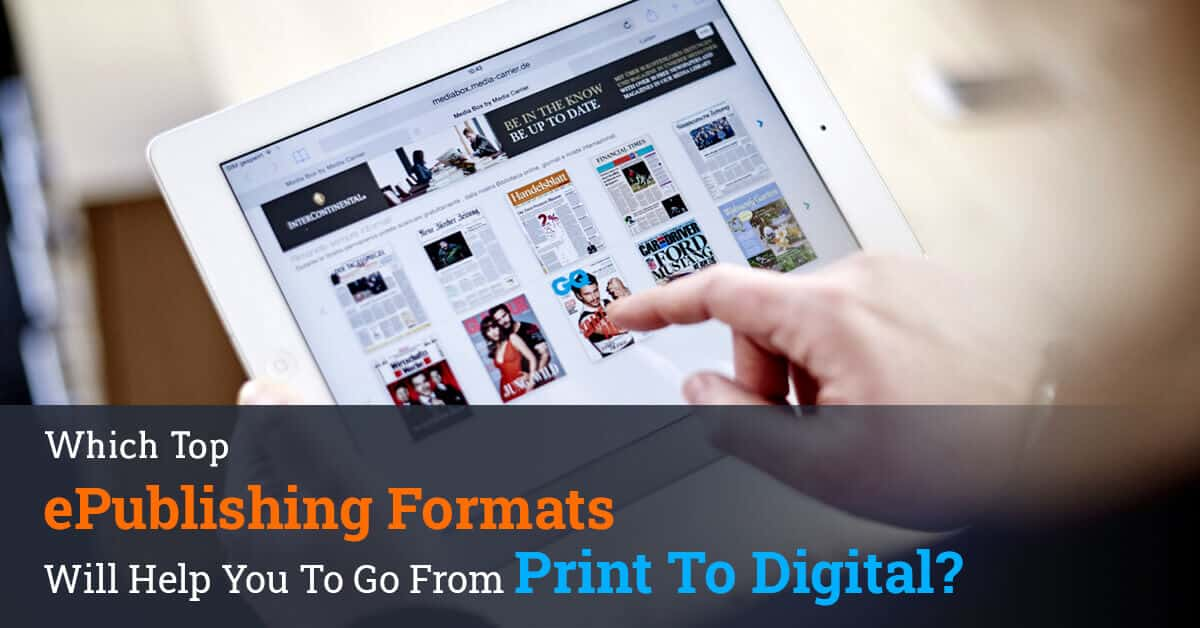
ePublishing format has become a new sensation in the digital education market. Digital publishing (also known as web-based publishing or e-publishing) is the process of publishing magazines, digital books, white papers, studies, or any other form of long-structured content on the web or through electronic modes. As a result, it uses online creativity to digitize print content and carefully publish it.
According to Statista, 4.66 billion people were active Internet users in October 2020, accounting for 59.5 percent of the global population. Furthermore, technological advancements and improvements in the digital realm have created favorable conditions for the growth of online publications, including the possibility of expanding content streams and revenue streams.
What exactly is e-publishing?
Educational publishing solutions have embraced a digital transformation with enthusiasm. As a result, ebooks have become increasingly common, contributing significantly to overall revenue. Publishers enjoy a higher sell-through rate while maintaining lower production and delivery costs. Despite the enhanced digital user interface and increased capacity for tailored e-learning arrangements and content maintenance, these benefits have prompted publishers to venture into flexible publishing, which provides more intelligent content, continuous review, and customized e-learning.
COVID-19 sped up their day of work against this direction, as education publishers were at the time getting carefully situated in mid-2020. The global market for digital education publishing is segmented by type and end-users.
- It is divided into four categories based on type: online book, online magazine, online inventory, and others.
- The market is divided into three segments based on end-users: K-12, higher education, and corporate/expertise. The rapid infiltration of mobile devices is one of the key factors driving the digital educational publishing industry’s growth.
What are the top ePublishing file formats used for digital education?
Some of the well known ePublishing file formats are:
1. ePub
In September 2007, the International Digital Publishing Forum (IDPF) designated EPUB as the authoritative standard to replace OEB. Apart from the Kindle, the EPUB format can be read on various mobile phones and is the most common reading application. Amazon suggests that independent publishers switch EPUB records for publishing Kindle eBooks beginning in 2021.
Amazon converts the EPUB into an exclusive contract after it has been transferred. (EPUB documents with a fixed template are a different story.) EPUB is supported by most tablets and is considered the “widespread” ebook style. The EPUB architecture currently incorporates a significant amount of HTML5 and CSS3. HTML5 to epub3 is deemed essential to the nature of the eBook EPUB’s adoption of HTML5 and CSS3 will allow the development of rich substance experiences.
2. MOBI
The arrangement developed for the MobiPocket Reader is known as MOBI. MOBI is a format for Amazon ebook that is limited. The MOBI organization’s growth is thought to be entirely dependent on Amazon, a fantastic content provider, and the Kindle brand. Mobi supports various Kindle apps, including Kindle for PC, Kindle for Mac, and Kindle for iPad. The peruser will browse in full-screen mode. It also allows certain PDAs, communicators, and mobile phones to be supported.
There are two places on the Internet where you can find the most MOBI digital books. One is a MOBI file that has been converted from EPUB, PDF, or TXT, and the other is an Amazon purchase.
3. IBA
IBA is a program that organizes books created with Apple’s iBooks Author application. This structure is very similar to the EPUB design. However, it will rely on custom gadget code in the Apple Books application to work not to be read on all tablets.
If you want to use an ebook in your IBA design, you’ll need to use iBooks Author. Video, sound, images, and intelligent components can all be supported by the IBA setup. Until then, IBA style is appropriate for digital books, organization item displays, and organization leaflets, among other things. What matters is that IBA’s content will be delivered through the iBooks Store rather than the various App categories.
4. AZW
Since AZW design is Amazon’s entire organization, it isn’t as widely supported in tablets as EPUB and MOBI design. The AZW interface is viewable on all Amazon Kindle products, but it is not viewable on other mainstream gadgets. Bookmarks, explanations, and functionality can all be stored in AZW documents. A large number of the books currently available on Amazon are in the AZW format. The Amazon Kindle is the only device that uses the AZW interface. Cell phones (iPhone, Android, and Blackberry), PCs, and tablets will all access AZW data.
5. PDF
The PDF format is perhaps the most well-known ebook format. Adobe has suffocated it. PDF stands for “portable archive template.” Highlights such as strain, passwords, and semantic designs are now supported in this configuration. PDF records are supported by almost all modern ebook readers, laptops, and smartphones. PDFs can be transferred to a tablet computer.
PDF files can include diagrams, images, embedded textual styles, and more, as well as various complex typesetting. It can also maintain the appearance of paper books, making it a more popular ebook format. Adobe also provides PDF reports of pressure, hidden word capabilities, and digital rights management (DRM).
How can ePublishing tools help ebook creation services?
Authoring tools allow for the development of intuitive and adaptable visual and audio content and reduce the time it takes to change, format, collect assets, and update content. They also help ebook creation services to speed up the creation, modification, and publication of content in general. Ebook converters turn your eBooks into recognizable record formats for your screen. It also enables you to convert between standard ebook formats such as EPUB3 conversion, MOBI (Kindle), FB2, and PDF.
Having access to excellent writing tools can determine the future of educational publishers in the long run. These tools help in file conversions like;
- Create an eBook from a paper book
- Journals and articles can be converted into eBooks.
- Creating an eBook from a Manuscript
- Print Magazine to eBook Conversion
- Paper catalogs can be converted into eBooks.
- PDF to ebook conversion
Final words
Remember that choosing the proper organization for your ePublishing is crucial to make your ePublishing solutions effective and widely published. Set aside the time to collect all of the necessary information to narrow down a perfect option for your project requirements. The Future Of Educational Publishers looks bright thanks to recent technological advances, as these comprehensive digital platforms assist them in their operations and keep them relevant.
Is there anything else you’d like to know more about ePublishing services? Get in touch with SunTec India; our team is here to help you with the best possible solutions.
Also, Read Related Articles:

